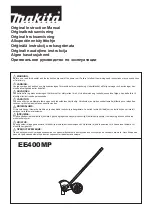
Chapter 6
Fiber Optics Diagnostics (TRACETEK)
TRACETEK works by launching a high-power laser pulse down the fiber and monitoring
reflections returned by the end of the cable, connectors, mechanical splices, and cable
breaks. This important functionality will help locate sources of excessive reflection in
the cabling system. Excessive reflection in an optical system leads to high bit error
rates, preventing the network from operating at its full capability.
One of the most common sources of excessive return loss is dirty or poorly polished
connectors. When there is too much reflection in a system, the reflected power can
interact with the downstream signal, either increasing or decreasing the amplitude of
the transmitted signal. Additionally, if the reflection is strong enough it can interfere
with the feedback circuit on the laser transmitter causing fluctuations in output power.
Unlike a power meter, which measures the loss across a link, TRACETEK displays the
relative reflection of events in a link allowing the user to isolate and remedy problems.
TRACETEK DISPLAY
After deciding which setting is best for your situation, select the appropriate mode and
press ENTER. TRACETEK will sample the fiber for about 30 seconds before displaying
the acquired trace data.
Figure 6-3: TRACETEK Display
Table 6-2: Key Elements of the TRACETEK Display
1
Start pulse (first connector)
2 Reflective
events
3
End of fiber (last connector or break in cable)
4 Moveable
Cursor
5
Total length of fiber
6 Cursor
position
6-5
www.vemco.pl
















































